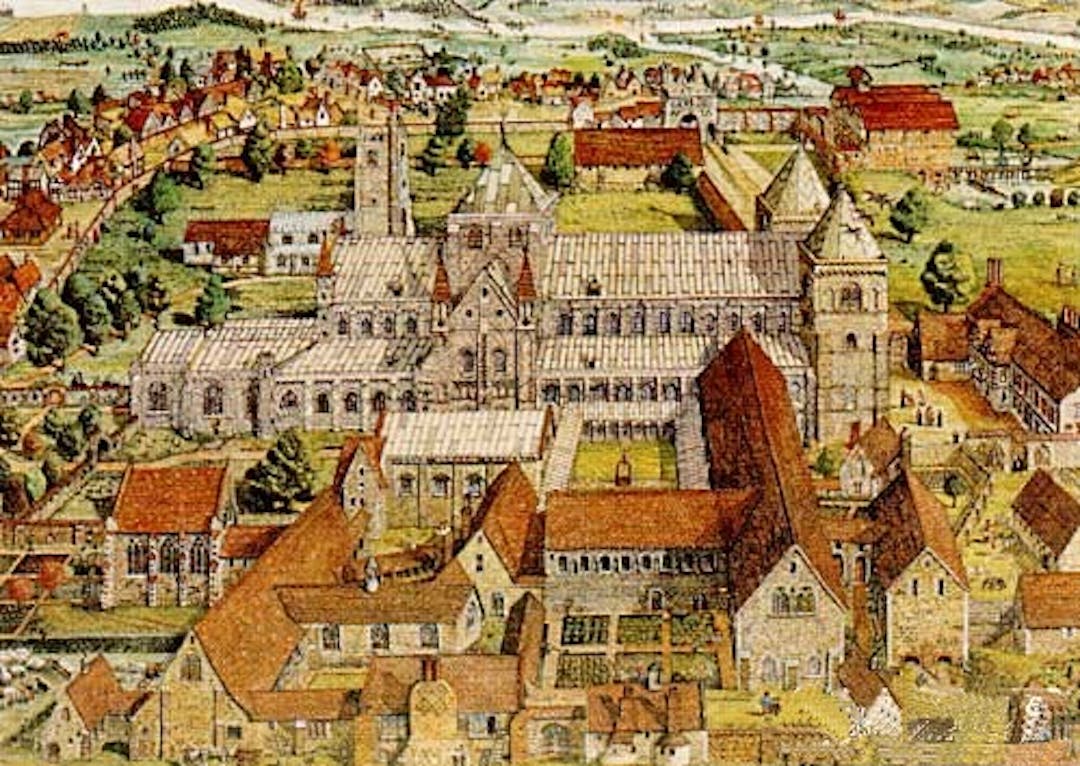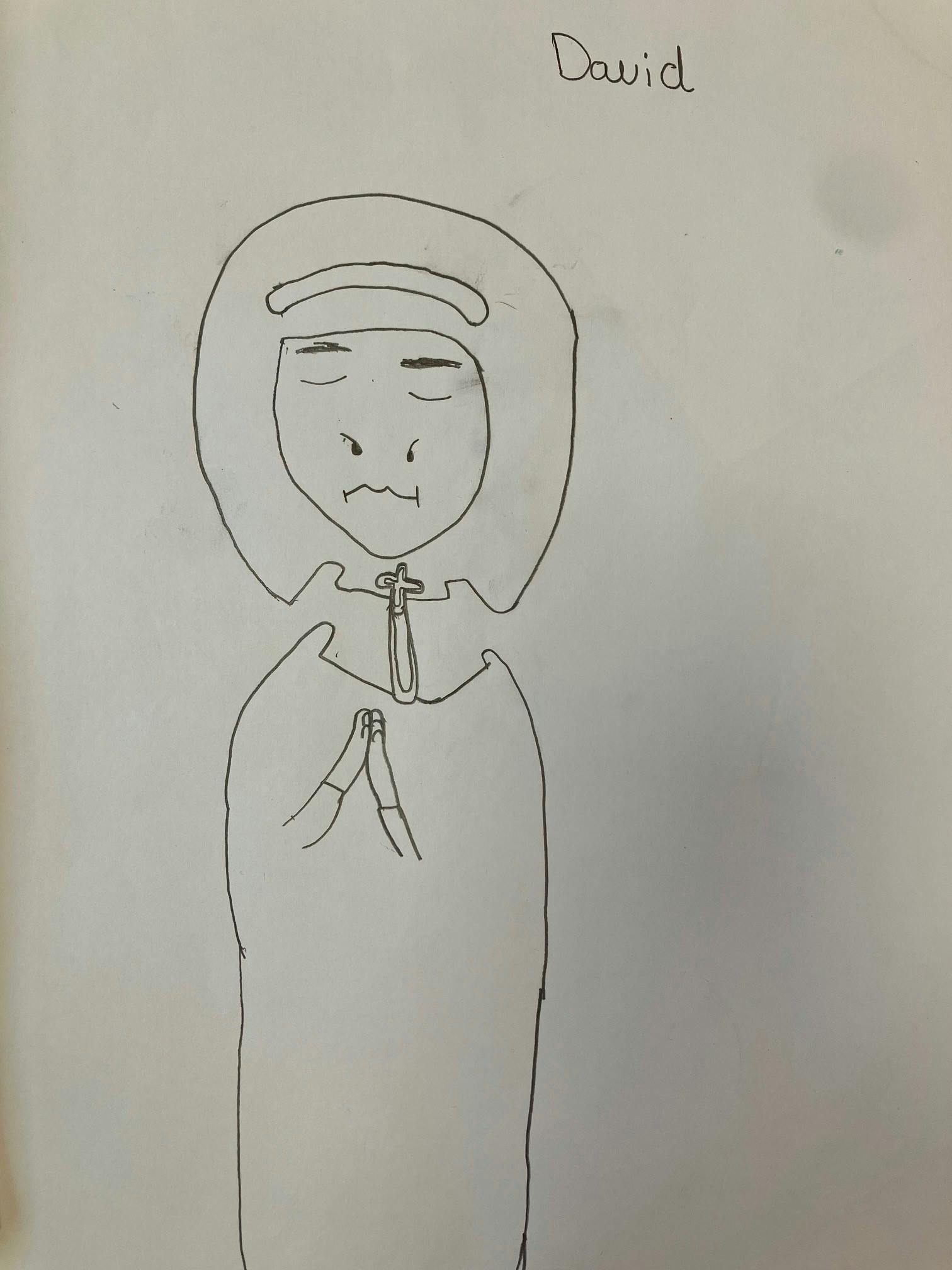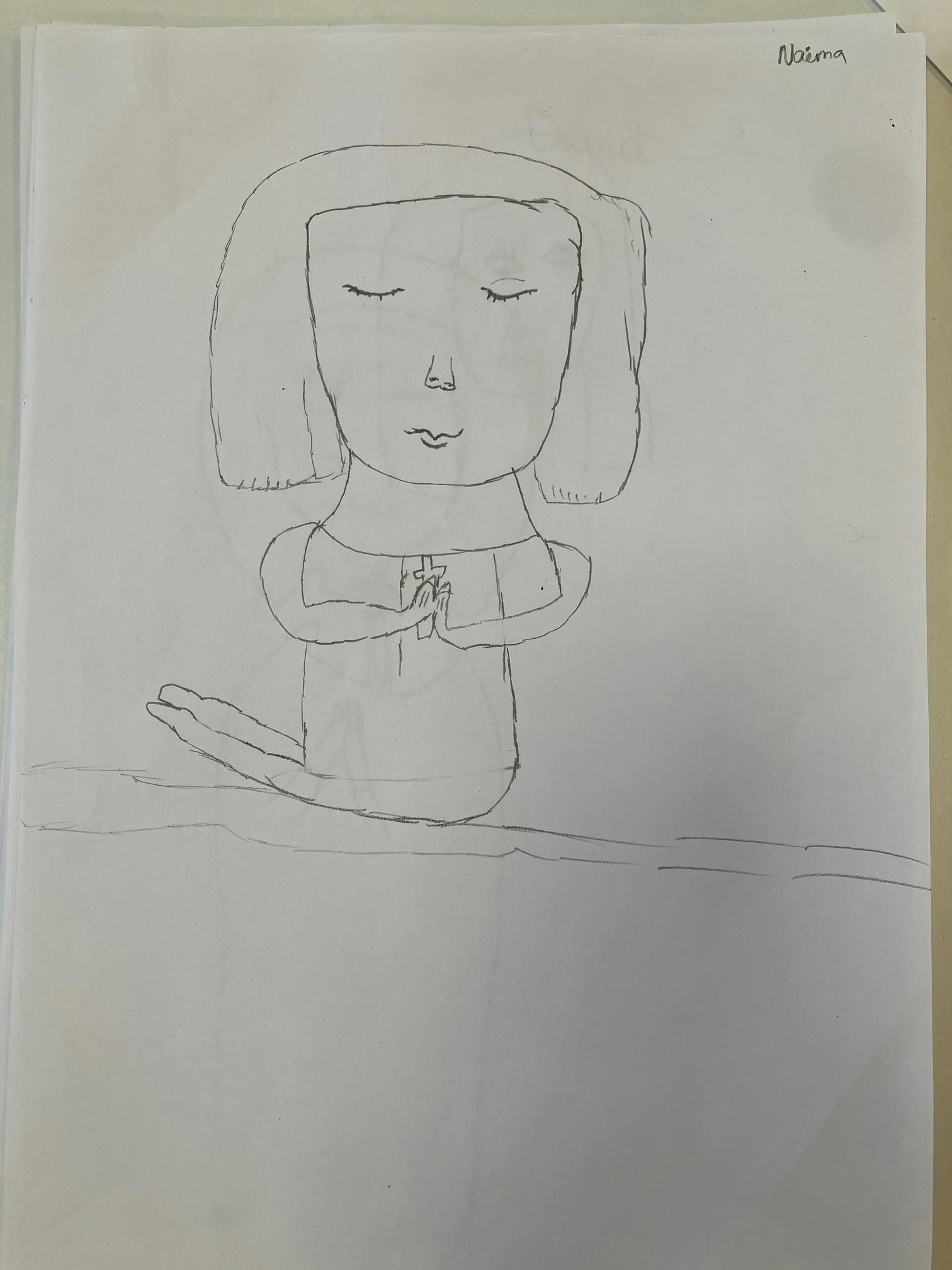Barking Abbey Heritage & Archaeology Project

Barking Abbey - St Mary & St Ethelburga's – Scheduled Ancient Monument, Grade II listed
Abbey Green was once the site of one of the most significant religious houses in the country. Barking Abbey was founded in AD666 by East Saxon Bishop, St Erkenwald, for his sister St Ethelburga, who was the first Abbess. The abbey church was dedicated to St Mary and later, also St Ethelburga, also known as Our Lady and St Ethelburga. It was initially a double community where monks and nuns both lived, separately, in their devotion to God.
Hildelith as the second abbess was said to have been brought over from a French monastery (such as Farmoutiers) to assist Ethelburga, before she succeeded her. Diane Watt argues that she established a monastic school in Barking. We expect she worked hard to justify the abbey's continuing rights to abbey lands and drew on a tradition of chronicle writing, exploiting the newly held Christian beliefs of the East Saxons. She most likely wrote or commissioned a history of Barking Abbey and the surrounding area, including the rule and role of King Sebbi, to cement Barking’s importance.
This has become known as the Lost Book of Barking - a book which provided Bede with his information when writing about Barking and other aspects of the East Saxon kingdom in his Ecclesiastical History of the English People in the early 8th century, c.730. He directly referenced this book as the source of his information about the history of Barking Abbey and the miracles associated with Ethelburga in its early years, which came from the testimonies of eye-witnesses and supported her canonisation as a saint.
Aldhelm’s De virginitate (ca. 675–680), was also likely to have been commissioned by Hildelith and her fellow nuns; and a letter written by Boniface around 716, relating the vision of the monk of Much Wenlock, is also attributed to Hildelith. There is evidence therefore, that Hildelith, one of the most recognised Saxon Abbesses, led a well-established monastic school and was part of a wider scholarly and literary network.
Maybe it is this legacy, coupled with her long tenure as abbess, that cements her reputation as being the older, wiser and more astute of the first two Barking abbesses. Like her predecessor and founding abbess, she was also sainted - demonstrating her significance to Saxon Christianity.
The abbey's buildings were destroyed by the Danes around AD 870 but the abbey was rebuilt about a century later and re-founded by St Dunstan, as a Benedictine nunnery. William the Conqueror stayed at Barking Abbey after his victory in 1066, whilst his Tower of London was being built, further along the Thames. Abbess Aelfgifu who was in charge of the abbey at that time could well be the woman named on the Bayeux Tapestry and there is a possibility that Barking nuns contributed to its completion.
Many of the country’s most revered medieval women, often of royal blood, served as nuns or Abbesses in Barking. Some became saints, others made significant contributions to literature and religious liturgy. From 1436 to 1440, Edmund Tudor, father of Henry VII, was kept at the abbey with his brother Jasper, under the supervision of abbess, Catherine de la Pole.
The last Abbess was Dorothy Barley, who held the post until Henry VIII dissolved the Abbey between 1539-41. Most of the building's materials were removed to restore royal palaces at Dartford and Greenwich. Land known as Gynge Abbes, held by Barking Abbey at Ingatestone, was purchased by William Petre (proctor/assistant to Thomas Cromwell). We presume he was impressed or grateful to the abbess of Barking, as she went to live with his family there, after the dissolution of the abbey, and his daughter who was born in the year of the abbey's dissolution was named Dorothy, perhaps out of respect for the last abbess.
The manor of Barking was kept by the Crown until 1628 when It was sold to Sir Thomas Fanshawe and later to successive Lords of the Manor. The ruins were excavated in 1911 and the Abbey’s footings recovered and demarcated. The churchyard walls, also protected, are mainly built of medieval stone, perhaps also excavated from the Abbey.
The Bronze model of the Abbey, in front of the Curfew Tower in Barking, represents how it is believed to have looked before it was demolished. The model was created and installed by Setworks, in 2021 as part of a National Lottery Heritage Fund project in Barking. The design was based on research conducted by Valence House Museum and maps were used to predict the accurate dimensions of each of the Abbey buildings including the abbey's magnificent church of St Mary & St Ethelburga.
 Photograph - Jimmy Lee Photography
Photograph - Jimmy Lee Photography
The Curfew Tower was once a gateway to Barking Abbey
The Curfew Tower, as it is known today, is the only remaining gateway to Barking’s Saxon Abbey. The tower is Grade II* listed – as, The Fire Bell Gate. The original medieval belfry was built in 1370, and the current tower dates from around 1460. The upper storey was largely rebuilt in the late nineteenth century. The names Curfew Tower and Fire Bell Gate probably arose from the tolling of the tower bell, before the nightly curfew, which rang until the end of the Victorian period.

Curfew Tower - Jimmy Lee Photography
'The Abbey Gate', as it was also known, was the central of three gateways to Barking Abbey, and continues to stand proudly as the gateway to the Grade I listed, St Margaret’s Parish Church and graveyard, as well as the Barking Abbey ruins.
Barking’s, twelfth century, Holy Rood, is a rare stone representation of the crucifixion, which resides in the Curfew Tower. This holy relic, once visited by many paying pilgrims, was moved into the Curfew Tower around 1400, when the original roof-loft chapel was licensed for services and known as the ‘Chapel of the Holy Rood’. Unfortunately, the rood is quite damaged - it was probably defaced during the dissolution and destruction of Barking Abbey…
This distinctive tower was used as the motif of Barking’s Urban District Council from 1895 and more recently to promote the Abbey and Barking Town Heritage Project, funded by The National Lottery Heritage Fund. The area in front of the tower was redesigned by Node in 2020 to reflect the heritage of the site and encourage better use of it. T Loughman & Co Ltd re-set the York stone and added the cobbled border to represent the historic Church Path and the landscaping including trees were repositioned to frame the tower rather than obscure the view. Heritage style benches have been installed to encourage people to relax and enjoy this improved space and heritage interpretation on Abbey Green!













 They variously represented Tudor folk and activities from herbalists to teachers.
They variously represented Tudor folk and activities from herbalists to teachers. They demonstrated weaving with a shuttle and loom, cooking Tudor recipes and forms of entertainment, all in Tudor attire and period dialect - aye! Janice was in her element getting creative with wool...
They demonstrated weaving with a shuttle and loom, cooking Tudor recipes and forms of entertainment, all in Tudor attire and period dialect - aye! Janice was in her element getting creative with wool...












































